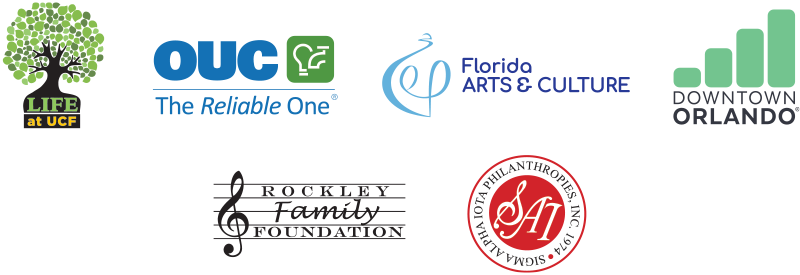-
Wednesday, Apr 3, 2024, 7:00 p.m.
- Alexis & Jim Pugh Theater
- Tickets: Free
- Purchase Tickets
- Jump to Program
Art historian Peter Kalb discusses creative endeavors inspired by space exploration.
-
Wednesday, Apr 3, 2024, 7:00 p.m.
- Alexis & Jim Pugh Theater
- Tickets: Free
- Purchase Tickets
- Jump to Program
Art historian Peter Kalb discusses creative endeavors inspired by the Apollo Program in 1972. The lunar adventure that was a source of such confusion and doubt provoked painters, sculptors, photographers and performers to create Apollonian art that makes good on the promise that with space exploration humanity would have a complex tool for encountering difference; reflecting on human aspirations, opportunities and limits; and building future worlds.
There were supposed to be more trips to the Moon. When the Apollo Program was ended abruptly in 1972, it was clear that our mastery of aerospace engineering had outpaced our ability to fully comprehend the unprecedented accomplishment of walking on the Moon. Despite enthusiasm among those committed to addressing Earth’s problems by leaving it, most people on Earth thought human space exploration encouraged fantasy or worse. The public had lost interest, politicians were satisfied with winning the Space Race, and philosophers asked if becoming interstellar travelers had not so irrevocably isolated the mind from the body and humanity from the Earth that reason itself had become impossible. The New York Times simply told its readers they would have to wait for “some future Homer” to explain what it all meant.
Yet, several artists made the case that the meaning of NASA’s success was not entirely beyond our grasp. In fact, their work reveals, Apollo granted access to new ways of understanding life in the space age.
Artists working in the United States, Europe, and Asia looked to the growing number of footsteps in the lunar dust and re-imagined how we represent ourselves on Earth and in space. In the photographs, maps, recordings, and data from outer space, they found ways of activating the senses necessarily insulated from extraterrestrial experience. These views from beyond, both collected from engineers and astronauts and created in the studio, further permitted artists to consider the character of a global space age citizenry. Had the Times’s reporter looked to the art world, he would have found the Homeric historians of this apparently incomprehensible moment were already at work.
Moon Art has continued. Subsequent generations of artists have shifted their focus from the character of space age life to considerations of what Apollo can teach us about mechanics of innovation and how the fortunes it promised might yet be realized.
In the wake of the remarkable ascent from the Florida coast to the Sea of Tranquility, artists did what seemed impossible. They confronted this event without the tools our species uses to make sense of novelty and difference: comparison to historical precedents and direct contact with our senses. The lunar adventure that was a source of such confusion and doubt, provoked painters, sculptors, photographers, and performers to create an Apollonian art that makes good on the promise that with space exploration humanity would have a complex tool for encountering difference; reflecting on human aspirations, opportunities, and limits; and building future worlds.
Peter R. Kalb is the Cynthia L. and Theodore S. Berenson Associate Professor of Contemporary Art and chair of the Department of Fine Arts at Brandeis University. His book, Art Since 1980: Charting the Contemporary (2013) examines political and aesthetic trends in today’s art world and draws on over 20 years of teaching and research. Kalb’s interest in Moon Art began with the publication of two monographic articles, “Walking to the Moon: Bricolage, Boundaries, and the Terrestrial Space Program of Tom Sachs,” (The Sculpture Research Semiyearly, 2017) and “Tom Sachs’s American Bricolage and the Revised Logic of Space Travel,” (Sculpture Journal, 2018), and has been expanding ever since. A selection of Kalb’s more terrestrial-based work includes “The Provocation of the Unpopulated Landscape,” in Carolyn L White ed. Reflections: The Architecture of Silence (2023); “Remaining in Sight: Andrea Bowers’s Art Lessons from Activists,” in Catha Paquette, Karen Kleinfelder, and Christopher Mills eds., In and Out of View: Art and the Dynamics of Circulation, Suppression, and Censorship (2022); “When We’re Screwed We Multiply: Andrea Bowers and Representation for Democracy,” in Rebecca McGrew ed. Andrea Bowers (2014); and “Picturing Pollock: Photography’s Challenge to the History of Abstract Expressionism,” (Journal of Art Historiography, 2012). Kalb is also the author of High Drama: The New York Cityscapes of Georgia O’Keeffe and Margaret Bourke-White (2003), the revising author of H.H. Arnason History of Modern Art (Fifth Edition, 2004), and served as the Boston-based corresponding editor for Art in America.

We extend particular gratitude to the staff and administration of Dr. Phillips Center for the Performing Arts for their partnership over the past ten years.
Thank You to Our Supporters

Sponsored in part by the State of Florida through the Division of Arts and Culture and the National Endowment for the Arts.
- The Judith and David Albertson Endowment in the Arts
- Cartwright Family Humanities & Arts Endowment
- Phil and Jane Easterling
- LIFE at UCF
- Orlando Downtown Development Board
- OUC – The Reliable One
- Women’s Club at UCF, Inc.
Thank You to Our Festival Partners
- Dr. Phillips Center for the Performing Arts
- National Young Composers Challenge
- Orlando Family Stage
- Orlando Shakes
- Orlando Philharmonic Orchestra
- UCF College of Health Professions and Sciences
- UCF Global Perspectives and International Initiatives
- UCF Rosen College of Hospitality Management
- Winter Park Institute
- WUCF
